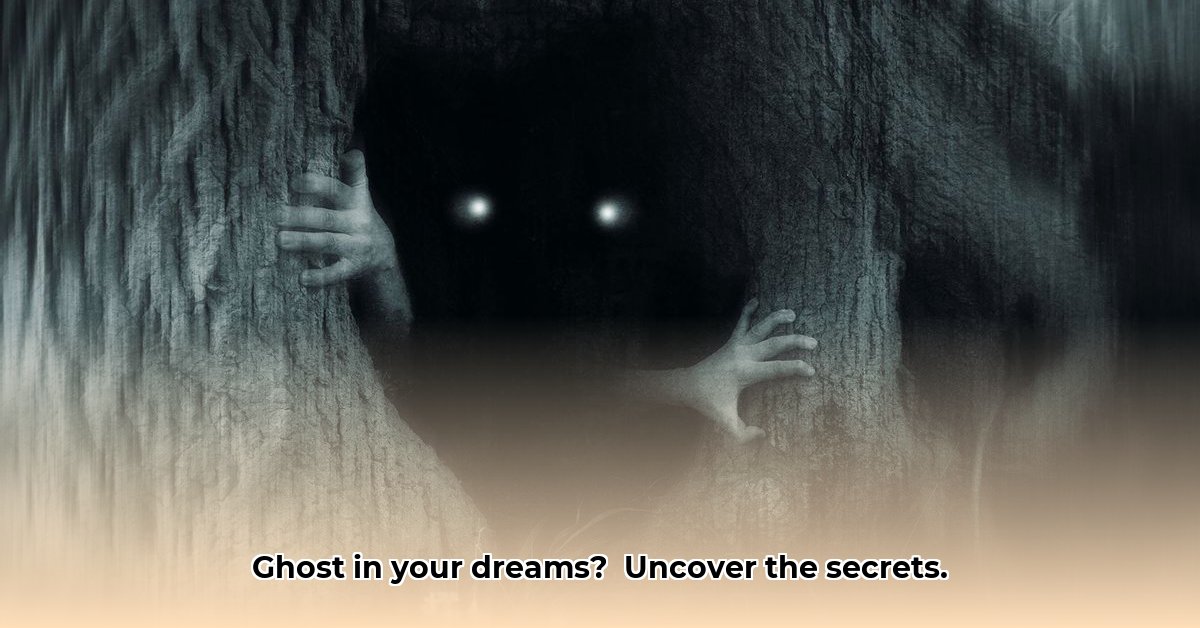
Ever woken up from a dream feeling strangely unsettled, a ghostly figure lingering in your memory? Ghost dreams, while sometimes unsettling, are rarely purely negative. They often hold symbolic meaning, offering valuable insights into your subconscious. This guide provides a step-by-step process to interpret your ghost dreams, turning potentially unsettling experiences into opportunities for self-discovery and healing.
Understanding the Symbolism of Ghosts in Dreams
Ghosts in dreams aren't just spooky apparitions; they are powerful symbols reflecting your inner world. They act as messengers from your subconscious, highlighting unresolved issues, buried emotions, or anxieties you might be avoiding. The type of ghost and your emotional response are key to understanding the message.
- Friendly Ghosts: A benevolent, translucent ghost often symbolizes intuition, inner wisdom, or spiritual guidance. It might suggest you're on the right path or tapping into your inner knowing.
- Menacing Ghosts: A shadowy, aggressive ghost chasing you, for example, may represent deep-seated fears, unresolved guilt, or anxieties you're avoiding. This calls for confronting these issues directly.
- Ghosts of Loved Ones: Dreams featuring deceased loved ones often point to unresolved grief, unfinished business, or their continuing influence on your life. Was the interaction peaceful or fraught with tension? This detail is crucial to interpretation.
Interpreting Your Ghost Dream: A Step-by-Step Process
Deciphering the message of your ghost dream requires a methodical approach. Follow these steps:
1. Record the Dream Details: Immediately upon waking, jot down everything you remember. Include sensory details (sights, sounds, smells, textures), interactions with the ghost, and, crucially, your emotions during the dream. The more comprehensive your record, the richer your interpretation.
2. Identify Key Symbols: Analyze your dream journal. What stands out? The ghost's appearance (was it a familiar person?), its actions, and the setting (was it familiar or unfamiliar?) are all important symbols. An unfamiliar location might represent unexplored aspects of yourself.
3. Connect to Personal Experiences: Reflect on your life. Are there unresolved issues, conflicts, or feelings of guilt or grief mirroring the dream's narrative? Often, dreams utilize metaphors; the ghost might represent a part of yourself needing attention, or a challenge you need to address.
4. Consider the Emotional Impact: Your emotional response is key. Did the ghost evoke fear, peace, or sadness? Fear might suggest anxieties requiring attention, while peace could indicate healing or acceptance.
Beyond Interpretation: Actionable Steps for Growth
Understanding your dream is only the beginning. These actions can help you process the insights and move forward:
- Continue Journaling: Regularly documenting your dreams helps identify patterns and recurring themes.
- Practice Self-Reflection: Meditation, mindfulness exercises, or journaling prompts focused on your dream's themes can provide further clarity.
- Seek Professional Help: If the dream is causing significant distress or you're struggling to process the emotions, consider seeking guidance from a therapist or counselor.
- Explore Spiritual Practices: If you're inclined, spiritual practices like yoga or energy healing might enhance self-awareness and facilitate healing.
Cultural Considerations in Dream Interpretation
Interpretations of ghost dreams vary across cultures. In some traditions, ghosts are benevolent guides; in others, they are warnings of misfortune. Acknowledging your cultural background adds crucial context to your interpretation.
Conclusion: Embracing the Opportunity for Self-Discovery
Ghost dreams are not simply nightmares; they present opportunities for profound self-understanding and healing. By diligently following these steps, you can transform potentially unsettling dreams into valuable self-discovery tools. Embrace the insights, take action, and use your dreams to foster personal growth and inner peace.